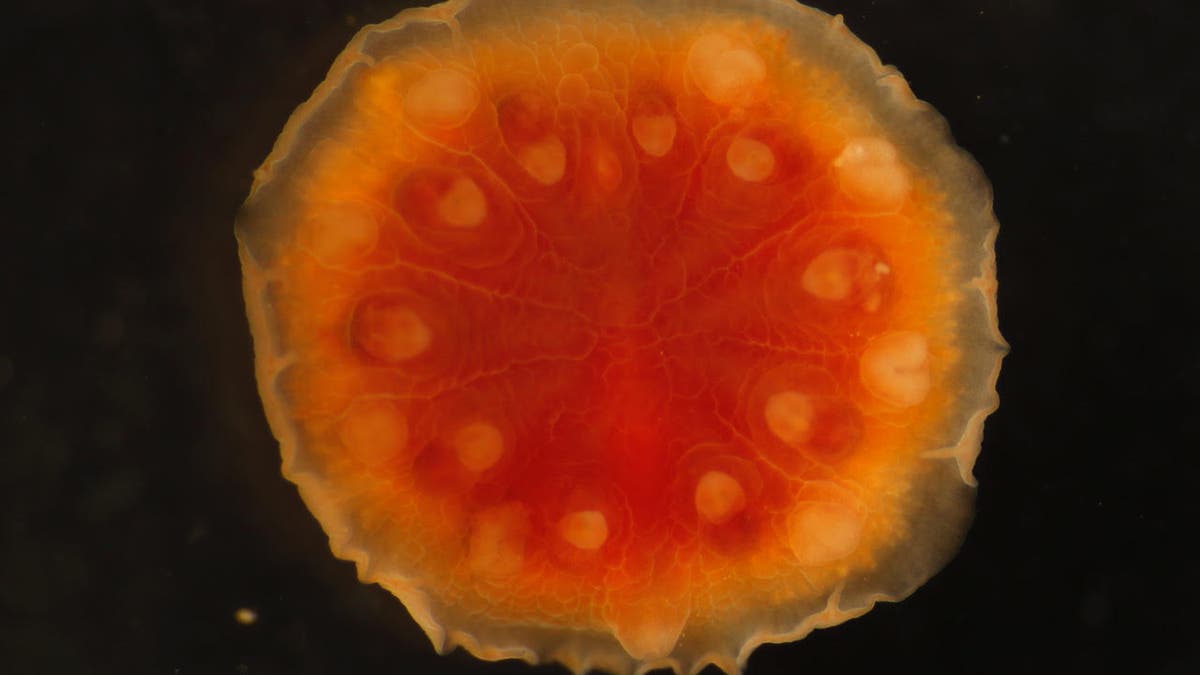
A new species of Xenoturbella was discovered in Costa Rica during a recent expedition. (Schmidt Ocean Institute/ROV SuBastian)
Scientists on a mission to explore Costa Rican waters made incredible scientific discoveries along the way: identifying four new species of deep-sea corals and at least eight other sea creatures.
A group of scientists, including Pennsylvania's Temple University biology professor Dr. Erik Cordes who led the trip, surveyed seamounts — underwater mountains — near Isla del Coco while aboard the research vessel Falkor. The focus of the 3-week expedition was to examine the "important corridor" the seamounts provide, the Schmidt Ocean Institute explained in a recent news release.
"Investigating these systems on all biological size scales, the team focused on relationships between species, from microbes to fauna such as fish and coral," the non-profit marine research foundation said, adding that it was the first time seven seamounts around that location have been surveyed.
BIZARRE DEEP-SEA FISH LIVING IN GULF OF CALIFORNIA WITH 'VIRTUALLY NO OXYGEN' PUZZLES BIOLOGISTS
Thanks to remotely operated vehicles equipped with cameras, the explorers were able to capture and collect samples from their 19 deep dives. Throughout their journey, the scientists spotted various colorful corals, sea sponges, brittle stars, oysters, among other sea critters.

A new species of Osedax, also known as boneworms, was found off Costa Rica. (Greg Rouse/Scripps Institution of Oceanography, UCSD/SOI)
“Every dive continues to amaze us,” Cordes said in an online statement. “We discovered species of reef-building stony corals at over 800 meters [2,624 feet] depth on two different seamounts. The closest records of this species are from the deep waters around the Galapagos Islands. The deep sea is the largest habitat on Earth. Understanding how that habitat functions will help us to understand how the planet, as a whole, works.”

Two new species of myzostome worms were found during the Costa Rica trip. (Greg Rouse/Scripps Institution of Oceanography, UCSD/SOI)
During their adventure, the scientists believe they found at least five new animals — a relative of the Biremis worm, three new species of Myzostome worms, three new species of Osedax and Xenoturbella — though they believe there could be others, pending DNA test results.
"The genus Biremis was only known to have one species in it - Biremis blandi, a marine polychaete worm discovered in 1971 in the Bahamas. However, on this recent expedition to Costa Rica, another Biremis was found. As it was found in the Pacific, researchers immediately believed it to be a new species, and DNA sequencing soon proved that to be true," a spokesman for the Schmidt Ocean Institute told Fox News in an emailed statement Wednesday, noting they are commonly referred to as "spaghetti worms."
Two new types of Myzostome worms were also found. These flat-figured worms are "parasitic on echinoderms," the organization says.
'MOST VENEMOUS' FISH IN THE WORLD DISCOVERED IN POPULAR SWIMMING SPOT PROMPTS WARNING FROM BEACHGOER
The Osedax, also known as "boneworms," earned its nickname by nibbling on the bones of whale carcasses.
"Osedax do not have a mouth or teeth, so they secrete acid to bore into the bone. Because Osedax do not have a stomach either, they rely on a symbiotic relationship with bacteria that aid in the process of digesting proteins and lipids. Osedax have unusual root-like structures that absorb nutrients, as well as colorful, feathery plumes that act as gills," according to the Schmidt Ocean Institute.

"Xenoturbella is a genus of very simple animal with bilateral symmetry that grows up to a few centimeters long," the Schmidt Ocean Institute describes. (Greg Rouse/Scripps Institution of Oceanography, UCSD/SOI)
Another type of Xenoturbella, a genus of a "simple animal with bilateral symmetry," was also spotted.
"It contains a small number of marine benthic worm-like species. Classifying Xenoturbellas precisely in the correct the branch of biology has been a baffling problem for researchers since its first discovery in 1915," the Schmidt Ocean Institute says.
Schmidt Ocean Institute co-founder Wendy Schmidt hopes the research will support ongoing conservation efforts in Costa Rica.
MYSTERIOUS SEA CREATURE DRAWS 'ALIEN' COMPARISONS WITH ITS SHARP TEETH, SPIKY SKIN
"One of the most important things we can do now is understand how these communities work, so if there are changes in the future we can measure human impact," she said, adding the group plans to use their research to advise officials which areas are considered "important habitats" and should be off-limits for fishing or other disruptive activity.
Schmidt believes proof of these "amazing" species will encourage people to fight harder to protect the world's oceans, including "the deeper areas that don’t always attract the attention that they deserve."

The genus Biremis was only known to have one species in it - until now. ( Schmidt Ocean Institute/ROV SuBastian)
Even deep down below the ocean's surface — more than 2 miles under, to be more precise — within the Mid-American Trench Schmidt said there was evidence of human impact (trash).
"Threats to the deep sea already exist, including fishing and energy industries that are moving into deeper water, and the persistent risk of climate change. Seamount habitats hosts rare organisms that are particularly vulnerable and need protection," the Schmidt Ocean Institute stated.
Eben Schwartz, marine debris program manager for the California Coastal Commission, previously told Fox News at least "8 million metric tons [of trash] are entering the world's oceans every single year."




















